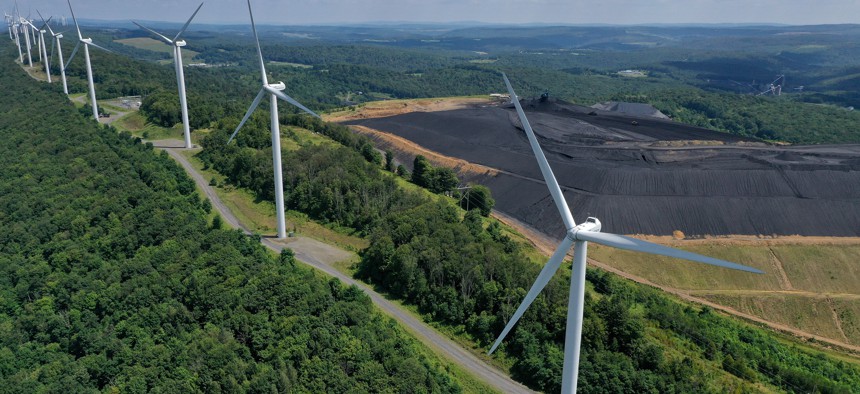Former coal towns get money for clean energy projects

Chip Somodevilla via Getty Images

Connecting state and local government leaders
Coal, oil and gas communities are receiving an amount of investment that is far above their share of the population.
Over the last year, investments have increasingly been going to projects designed to bring clean energy jobs to former coal communities.
More than 36% of those investments have gone to such communities to expand clean energy, according to data compiled by the Rhodium Group and the Massachusetts Institute of Technology’s Center for Energy and Environmental Policy Research.
Only 18.6% of the nation lives in these former coal, oil and gas communities, but 56% of investments in wind power and 42% in solar power have gone to these places.
Even more clean energy investments (44%) have been going to disadvantaged communities, or those impacted by climate change or socioeconomic factors. More than 38% of people live in low-income communities, and nearly 41% of the clean energy investments are going to low-income communities.
"What we're seeing in this data right now is pretty extraordinary,” said Lisa Hansmann, senior advisor at MIT’s policy center and a coauthor of the study. “Communities are receiving an amount of investment that is far above their share of the population. This is already a pretty substantial shift, a marked change from what you've seen in previous eras of economic transformation, when communities that were once industrial hubs experienced a significant amount of disinvestment. What you're seeing is a bending of the curve."
The funding is crucial for workers in fossil fuel industries—as well as the regions that depend on them—who have seen jobs disappear during the shift towards cleaner energy. The number of coal workers in the U.S., for instance, has dropped by half from 90,000 in 2012 to 43,500 in 2022, according to the Energy Information Administration,
The White House noted in a brief that adding one high-skilled manufacturing job in an urban area creates 2.5 other kinds of jobs, such as in construction and food service.
"You're bringing in workers off the sidelines to put steel in the ground,” Hansmann said. “That worker needs a place to go for lunch. That's a new customer for the business down the street. There's a real multiplier effect for these communities."
Though researchers have been tracking clean energy investments since President Joe Biden signed the Inflation Reduction Act into law a little more than a year ago, most of the money going into these communities so far is from private investments. Federal agencies are still in the process of creating rules and making available the grants under the law.
Hansmann said she expects that communities that once focused on producing fossil fuels will continue to receive funding to shift to clean energies, as most of the funding from the Inflation Reduction Act is spent.
On top of the climate law, what’s spurring private dollars to go to coal and other fossil fuel communities are other actions by the administration before the measure’s passage, Hansmann said.
Biden, for instance, signed an executive order upon taking office in January 2021 creating an interagency working group to identify federal resources “to revitalize the economies of coal, oil and gas, and power plant communities” and send them to create “well-paying union jobs and more opportunities for women and people of color in hard-hit communities.”
The working group made up of several federal agencies studied strategies to revitalize the communities’ economies and met with stakeholders in those areas, including economic development agencies and private companies. The group identified 25 communities that are struggling from the shift to clean energy and pinpointed $38 billion in existing federal funding that could be used.
Some of the funding, for instance, is going to build an iron-air battery plant in Weirton, West Virginia. The plant is expected to open in 2024 and create 750 jobs, according to a press release about the project. The release noted that the number of coal mining jobs in the state has dropped from 44,000 in the 1970s to 14,500 in 2021.
Hansmann noted that her center’s findings on where climate dollars are being spent are in line with what a Treasury Department study found earlier this month. It discovered that billions of dollars from the 2021 Infrastructure Investment and Jobs Act are going “to the states that need it most.”
About half of the infrastructure dollars that have been awarded thus far have gone for roads and bridge projects. Based on grades given by the American Society of Civil Engineers, states with poorer quality infrastructure and with lower incomes are getting more of the money.
Kery Murakami is a senior reporter for Route Fifty, covering Congress and federal policy. He can be reached at kmurakami@govexec.com. Follow @Kery_Murakami

NEXT STORY: One solution to fight climate change? Fewer parking spaces.





